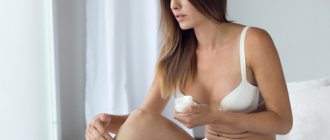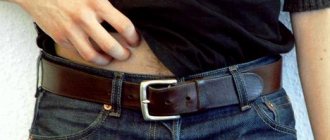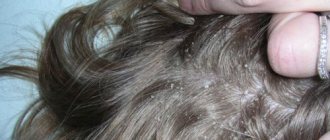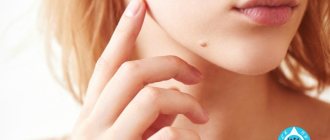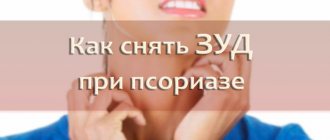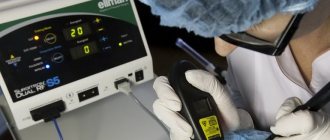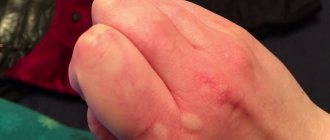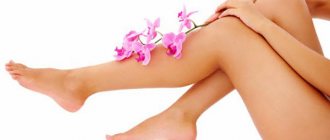Signs of itching, what it is like
Itching is a painful, tickling sensation that covers large areas of the human body. Itching often makes it difficult to sleep and concentrate. Everyone wants to get rid of this feeling, but there is no need to rush, you should conduct an analysis and find out where it could have come from.
Itching varies in severity by:
- Generalized, which appears in one place and does not spread further.
- Localized spreads throughout the body.
- Dermatological appears for various reasons.
- Systemic manifests itself in diseases of the liver and kidneys.
- Psychogenic occurs during stressful situations.
- Neuropathic appears due to diseases of the nervous system.
- Aquagenic appears when a person comes into contact with water.
- Reflex occurs in emotional people.
- High altitude appears when a person climbs to a height.
The article presents the most effective ointments for itchy skin.
| Frequency of development of itching in skin diseases | |
| Diagnosis | Frequency |
| Dermatitis | 100% |
| Psoriasis | 84% |
| Herpes | 58% |
| Kidney diseases | 22% |
| Cirrhosis | 80% |
| Diabetes | 3% |
| Hyperthyroidism | 7,5% |
The desire to scratch appears due to a rush of blood to the receptors that are located in the upper layers of the skin. The blood contains hormones and waste products that irritate the receptors. If these compounds are released into the blood in large quantities, this indicates some kind of disturbance in the body. There are several groups that can cause itching.
Dermatological diseases
Such diseases have several signs:
- burning and itching;
- blisters;
- swelling;
- the appearance of scales.
There are several types of dermatological diseases:
- neurodermatitis;
- pediculosis;
- folliculitis;
- lichen planus;
- dermatitis.
Internal diseases
Itching can appear not only due to skin diseases, but also due to diseases of the internal organs:
- Liver itching. There are intrahepatic and extrahepatic cholestasis. It appears due to impaired outflow of bile.
- Kidney itching. Appears all over the body or in one place and can be very strong.
- Thyroid diseases. In this case, the skin itches due to strong blood flow to the epidermis.
- Blood disease. The itching in this case can be constant and localized.
- Avitaminosis. Appears on the skin in the form of acne, which constantly itch.
- Helminths. The whole body itches and a small rash appears.
Physiological reasons
Physiological itching appears in response to natural environmental irritants.
It is short-lived, stops quickly and can appear due to:
- dry skin;
- long-term exposure to UV radiation;
- insect bites;
- temperature changes;
- skin irritation from sweat.
Infection
An infection in the form of itching on the skin can be caused by a mite. In this case, the itching may become stronger after taking water procedures. If you look closely at the skin, it will have whitish lines, this is an itch process, at the end of which there is a mite (microscopic dark dot). Other infectious options include chicken pox and herpes.
Badyaga
This product is obtained from dried and crushed freshwater sponges. Badyagu is produced in powder form, used to prepare a suspension, and as a gel.
Due to the content of a large number of needles, the substance irritates the skin and causes microtrauma. This leads to accelerated blood flow and cell regeneration.
When using badyagi in spring and summer, sunscreens are mandatory. It effectively fights red spots after a rash.
Classification of ointments for itching of the skin
Ointments for itchy skin in adults are of the following types:
- Anesthetics. They contain active substances that provide an anti-inflammatory effect. They are used for mild itching, which can be caused by bites of various insects.
- Antihistamines. Eliminate swelling and inflammation and improve skin condition.
- Antifungal. Prescribed when itching is a consequence of infection.
- Non-hormonal ointments. They have a disinfecting effect that accelerates the process of skin restoration.
- Hormonal. Potent remedies for inflammation and allergic skin manifestations.
How to choose?
The selection of the drug should be carried out exclusively by the attending physician. The dermatologist examines the patient, determines the exact causes of the symptoms and, based on this, selects a remedy. A cream for relieving skin itching is selected for each patient individually, taking into account his condition, the presence of allergic reactions and the principle of action of the active ingredients.
Types of antipruritic ointments
There are several types of products that are used to suppress skin itching and irritation. They differ in their principle of action, active components and purpose.
Antihistamines
Antihistamines take effect in less than 60 seconds after application. They reduce swelling and redness of the skin and neutralize itching. They block histamine receptors, which are sensitive to the protein released during an allergic reaction. The most popular means of this group are the following:
- Gistan. Available in the form of a light cream and ointment. It has proven itself well in the treatment of allergic dermatitis and in relieving inflammation.
- Fenistil. Available in the form of cream and gel. Quickly stops reactions to insect bites and eliminates allergy symptoms.
- Belosalik. Contains antipruritic, antihistamine and antimicrobial components. The main active ingredients are betamethasone dipropionate and salicylic acid. Can be used to treat dermatitis in adults and children over 1 year of age.
Non-hormonal
These formulations are used for insect bites and minor skin lesions . Stimulate regeneration, neutralize allergies and discomfort. The most popular drugs in the group include the following:
- Eplan . A cream that is widely used to treat dermatitis, insect bites, recovery from burns and other skin lesions.
- Bepanten . A product based on dexpanthenol, which stimulates healing processes, softens and soothes the feeling of itching.
- Radevit . used as an antipruritic, anti-inflammatory, emollient. Prevents the appearance of crusts.
Hormonal
Hormonal ointment for itching of the skin of the body, arms, legs and face is used to relieve severe redness and itching, against which conventional remedies have no visible effect . The composition that is used directly determines how quickly the results will appear. The course of use is short-lived. The following drugs are used for treatment:
- Advantan . Used in the treatment of eczema and extensive dermatitis. It is well tolerated and rarely causes side effects.
- Prednisiolon . Reduces the intensity of itching, inhibits inflammatory processes. Used for dermatitis, various types of alopecia, eczema. Not prescribed during pregnancy.
With antibiotics
Such ointments and creams have a complex effect, neutralizing unpleasant symptoms and preventing the proliferation of bacteria. The most popular means of this group are:
- Levomekol . An ointment that is quickly absorbed and has a pronounced antimicrobial effect. It is prescribed primarily in the presence of inflammation and purulent processes, but can also be used to relieve itching.
- Erythromycin . The composition contains a broad-spectrum antibiotic that inhibits the growth of bacteria and prevents the development of inflammation.
Antifungal
If the cause of discomfort is a fungal infection, conventional antibacterial components will not give the desired result. For fungal infections, therapy is carried out comprehensively to minimize the likelihood of relapse. The following drugs are used to treat fungal infections:
- Clotrimazole . Antifungal ointment that affects a large number of existing fungi. Not prescribed during pregnancy.
- Lamisil . Effective antifungal ointment. which is used for mycotic lesions of the feet and hands. It is also prescribed for the treatment of lichen.
- Nystatin . A remedy for the treatment of candidiasis, which can also be used for complex therapy for other fungal infections. Can be used during pregnancy, but only on the recommendation of the attending physician.
With menthol
Menthol in creams and ointments has a cooling and anti-inflammatory effect. It relieves pain well and has almost no contraindications. Menthol is contained in the following products:
- Boromenthol . Used to relieve rhinitis and skin irritation.
- Menovazin . A combined drug that has antipruritic and analgesic effects. It is used for myalgia, neuroglia and dermatitis. Not used if there are violations of the integrity of the skin.
Calcineurin inhibitors
Such ointments suppress the synthesis of substances that cause itching and discomfort. Examples of such means include the following:
- Elidel . Quickly eliminates the feeling of itching. In rare cases, it provokes an allergic reaction. Regular use of ointment can reduce local skin immunity.
- Protopik . Non-hormonal ointment to eliminate discomfort and itching. Exceeding the dosage may lead to a decrease in resistance to HPV pathogens. When using the product, you should refrain from contact with direct sunlight.
Directions for use and doses
All products are applied topically, in a thin layer and gently rubbed into the surface of the skin. The frequency of use should not exceed 4 times a day. The duration of treatment directly depends on the causes of unpleasant symptoms and the patient’s health condition.
Note ! For generalized lesions, doctors prescribe a combination treatment, which includes the use of ointments and oral medications, and general restoratives.
Contraindications for use
The list of contraindications for each product is individual. In most cases, contraindications are pregnancy and lactation, as well as individual sensitivity to the active substances. A number of products that contain menthol and other locally irritating components are contraindicated in the presence of damage to the integrity of the skin.
Folk remedies for itchy skin
Itching appears for various reasons, but if it is not associated with serious diseases, then folk remedies can help.
Herbal collection
You need to mix 1 tbsp. l. chamomile, lemon balm, mint and linden. Pour boiling water (1 l), leave for 20 minutes. Next, add 50 ml of honey to the solution and strain the finished tincture through cheesecloth. You need to take 50 ml 10 minutes before meals for 20 days.
Juniper
Pour crushed juniper with alcohol, leave in a dark place for 7 days and add 5 ml to the bath. These soothing baths should be taken every week and should not be used during pregnancy.
Series
2 tbsp. l string pour 100 ml of boiling water and brew for 15 minutes. Pour half the solution into the bath and sit in it for 10 minutes. Next, wipe the affected areas on the skin with a cotton swab and do not wipe.
Calendula and chamomile
1 tbsp. l. Boil these herbs in a water bath for 5 minutes. Cool the solution, pour it into the bath and sit in it for 30 minutes.
Soda
To prepare a bath with soda, you need to fill the bath with water and pour 1 tbsp into it. baking soda. Lie in such a bath for 30 minutes and let the skin dry without wiping.
Celandine
In the form of a decoction or tincture, celandine is an effective remedy against itching. It will take 1 tsp. celandine pour 1 tbsp. boiling water, leave for 15 minutes and strain. The resulting infusion should be used to wipe the affected areas of the skin and make compresses. A thick decoction of celandine is used for bathing.
Take 10 grams. plants and 100 ml of boiling water. You should take a bath for 15 minutes. You can also prepare an alcohol tincture from celandine. You will need 1 part herb and 5 parts vodka. Soak gauze in the solution and apply it to the itchy area for 15 minutes. To prevent skin irritation, the tincture is diluted with boiled water.
Honey
Honey has an antibacterial and wound-healing effect. For itching on the skin, apply a thin layer of honey, leave for 25 minutes and rinse with warm water.
Oatmeal and barley
2 tbsp. l. barley needs to be boiled in 1 liter of water, cooled, strained and used to irrigate the skin. Oatmeal should be diluted in water to a paste, mixed and applied to the affected areas. Itchy skin in adults and children interferes with enjoying life. Ointments prescribed by the doctor and folk remedies will help you quickly forget about this illness.
Recommendations and prevention
It is important to follow the following rules, which significantly reduce the risk of developing the disease and its recurrence:
- Before using the product, it is important to do an allergy test: a small amount of ointment is applied to the hand, and if after some time changes appear in this area, it is best to stop using sulfur ointment.
- When using the product, it is important to follow the dosage: apply the ointment in 1 layer no more than 2-3 times a day.
- Combining the drug with other drugs for local use is not recommended (this can only be done as prescribed by a doctor, when there is a special need).
Psilo-balm
Psilo balm is prescribed for urticaria, sunburn, and contact dermatitis. Psilo-balm is used to treat skin irritation in children starting from two years of age.
The ointments used should effectively relieve symptoms of the disease within the first hours after application.
Fleming's ointment has also proven itself well - a homeopathic remedy that contains only natural ingredients.
If this does not happen, then you need to look for another remedy, but first you must always understand the reasons for the development of skin itching.
Antihistamines
Antihistamines do not eliminate the cause of the rash, but temporarily neutralize the body's histamine receptors, stopping the release of biologically active substances into the blood - antibodies responsible for the allergic reaction.
Such drugs are divided into several generations: first (I), second (II), third (III) (see Table 1).
What all remedies have in common is their temporary effect. Medicines should not be used for a long time, as they are addictive.
First generation drugs have a fairly strong sedative effect and are contraindicated for people suffering from epilepsy, liver disease and peptic ulcers. Second- and third-generation drugs do not cause drowsiness, do not affect concentration, do not enhance the effect of drinking alcohol, and have fewer contraindications.
Rules for using antihistamines for allergy sufferers:
Reviews
Ilona, 29 years old: Last year, after a vacation at the seaside, my head started to itch. To get rid of this feeling, I tried several anti-dandruff shampoos, but the effect was fleeting. Then I started buying pharmaceutical products with tar and salicylic acid. It didn't help for long. I went to a trichologist, took a culture test for fungus, and it turned out to be simple mycosis.
Alexander, 35 years old: My son caught lice while on a hike, and as a result the whole family started itching! Three people fell ill at once. I thought it could only be cured if everyone shaved their heads, but everything worked out. The doctor prescribed Pedilin ointment and medicinal shampoo, and we were in quarantine. The treatment worked quickly, the itching went away in a couple of days.
Polina, 26 years old: A year ago, my head started itching, I tried a bunch of different shampoos, with tar, with sulsena, the itching did not go away, the skin was peeling, there was a feeling of tightness. I thought it was a fungus, but it turned out it was all about dry skin. Moisturizing head masks and heated olive oil worked; I had to give up blow-drying.
Itchy scalp is a feeling of discomfort that makes you want to scratch the irritated area. This sensation can be either temporary or permanent, and can cause serious inconvenience to a person. Most often, the head itches due to exposure of the skin to some external irritant, although it is possible that the symptom was provoked by one or another disease.
